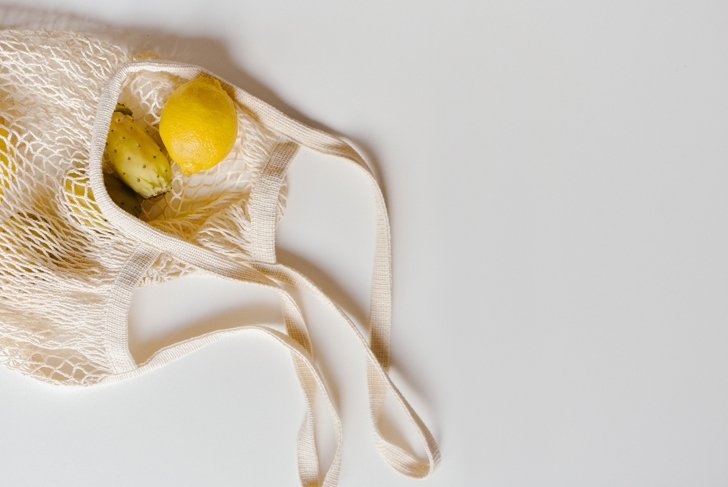
Recent literature suggests that we don’t just have a problem with consumption, but a full-blown addiction. We’re reaching the point of a total plastic takeover and—spoiler alert—recycling just isn’t going to save us.
In December 2007—while much of the world, and especially North Americans, were preparing for the most shamefully wasteful time of year—environmental advocate Annie Leonard debuted her 20-minute educational film, The Story of Stuff.
The film, which examines the materialist economy from extraction all the way to disposal, sheds light on the ruthless exploitation of people, materials, and land required to keep this unsustainable system going.
2007 to today
Since the film’s release, it’s been viewed more than 30 million times around the world and sparked the formation of the Story of Stuff Project (storyofstuff.org), a nonprofit organization dedicated to shifting the way we “make, use, and throw away stuff.”
The organization has created 14 additional online films tackling everything from bottled water to electronic waste; they’ve also campaigned against the use of microbeads (tiny bits of plastic often found in cosmetics), water privatization, plastic pollution, and more.
The Story of Stuff community now exceeds 1 million members globally, and they’re taking on their biggest opponent to date: plastics.
We have a plastic problem
According to a recent report, approximately 8.3 billion metric tonnes of virgin plastics have been produced globally to date. Of this, researchers estimate upwards of 6.3 billion metric tonnes have been disposed of in the following ways:
- 9 percent had been recycled
- 12 percent was incinerated
- 79 percent was accumulated in landfills or the natural environment
In Canada, we’re sheltered from this harsh reality, since we have the infrastructure in place to dispose of our plastics and other waste. But the truth is, Canadians are some of the worst waste offenders in the world.
In 2016, residential sources of waste for disposal totalled more than 10 million tonnes, with non-residential sources nearing 15 million tonnes. Much of this waste, we can assume, is made up of single-use plastics.
What a waste
To give you a visual, 8.3 billion metric tonnes is the equivalent of approximately 1,500 of the Great Pyramid of Giza.
Convenience is costly
Like the name implies, single-use plastics are designed to be used only once before they’re disposed of. To put it simply, single-use plastics are the result of a convenience-driven culture combined with corporate greed, and all over the world, people and the environment are paying the toll.
Plastic production relies upon a steady stream of crude oil, a finite resource that is dwindling by the day. Our insatiable appetite for crude oil has resulted in a long list of damaging environmental impacts, including catastrophic oil spills, habitat disruption, and unsafe drinking water.
Plastic disposal, in the form of incineration, releases dangerous toxins such as dioxins into the air and groundwater. According to the World Health Organization, dioxins can cause “reproductive and developmental problems, damage the immune system, interfere with hormones, and also cause cancer.”
The solution is prevention
Reduce, reuse, and recycle—for years the “three Rs” have been touted as the solution to our growing waste problem. However, overemphasis on recycling actually perpetuates the problem, since it doesn’t force us to look at our consumption habits.
In other words, recycling gives us a free pass to keep purchasing new products, so long as we put the packaging in the blue bin. We’re better off focusing on the other two Rs if we really want to make a positive impact.
Recently, Australia made headlines when the country’s two largest supermarket chains banned single-use plastic bags. In just three short months, this monumental decision prevented approximately 1.5 billion bags from entering the environment.
Vancouver has also been in the news for being the first major Canadian city to ban plastic drinking straws, effective this fall, along with polystyrene foam cups and containers. While this decision has garnered fair criticism (it’s by no means the “magic bullet to cleanse the oceans”), if handled responsibly, it could be a step in the right direction and an example of much-needed government action.
There is hope
In what could have been a bleak and apathy-inducing commentary, filmmakers of The Story of Stuff instead inspired viewers to take action and join a global community.
Their message is simple: together we can hold corporations and our governments accountable, and individually we can take action every day toward a safer, cleaner, and more environmentally responsible world.

“It’s just one bottle” …
… but it adds up to 13 million tonnes of plastic each year into our oceans
In May 2018, an eight-month old harp seal pup was found dead on the Isle of Skye, Scotland. Veterinary pathologist Andrew Brownlow necropsied the pup only to find it had ingested plastic. According to Brownlow, it’s rare to see intelligent creatures such as harp seals ingesting plastic, indicating how dire the plastic problem truly is.
In Indonesia last year, a dead right whale washed ashore with a large lump containing nearly 13 lbs (6 kg) of plastic waste in its stomach. Researchers from World Wildlife Fund said the lump of plastic contained 115 plastic cups, four plastic bottles, 25 plastic bags, two flip-flops, a nylon sack, and more than 1,000 other pieces of plastic.
Kick the plastic habit
No one said redefining our relationship with things and, in particular, with plastic would be easy, but we must start somewhere if we want to kick the habit.
- Instead of relying on a restaurant’s plastic or styrofoam containers for your takeout, bring your own reusable containers.
- Drink your coffee at the cafe instead of getting a to-go cup, or bring your own reusable mug.
- Say “no, thank you” to plastic bags and bring your own cloth bags for groceries and produce.
- Instead of buying something new, see if you can pick it up second-hand or borrow it from a friend.



